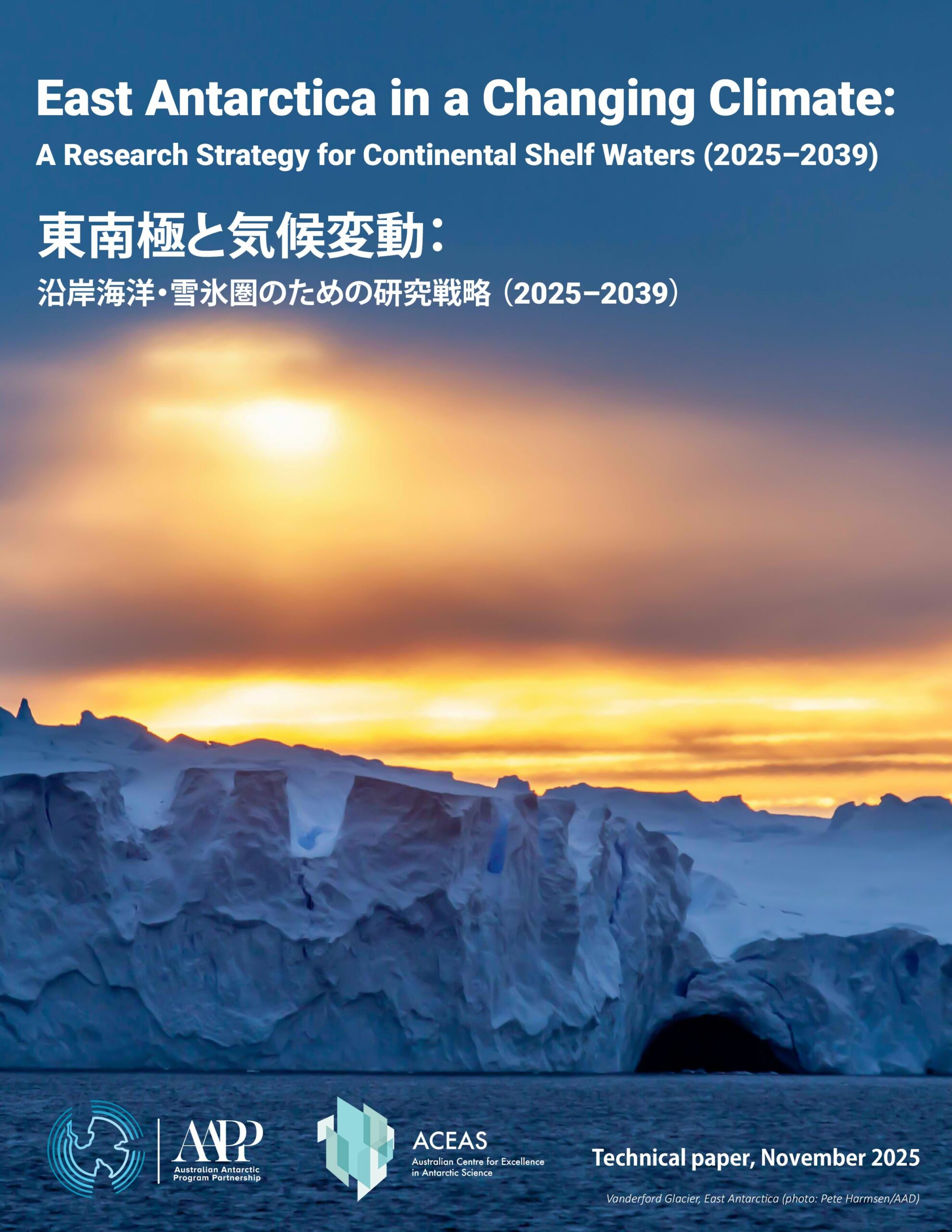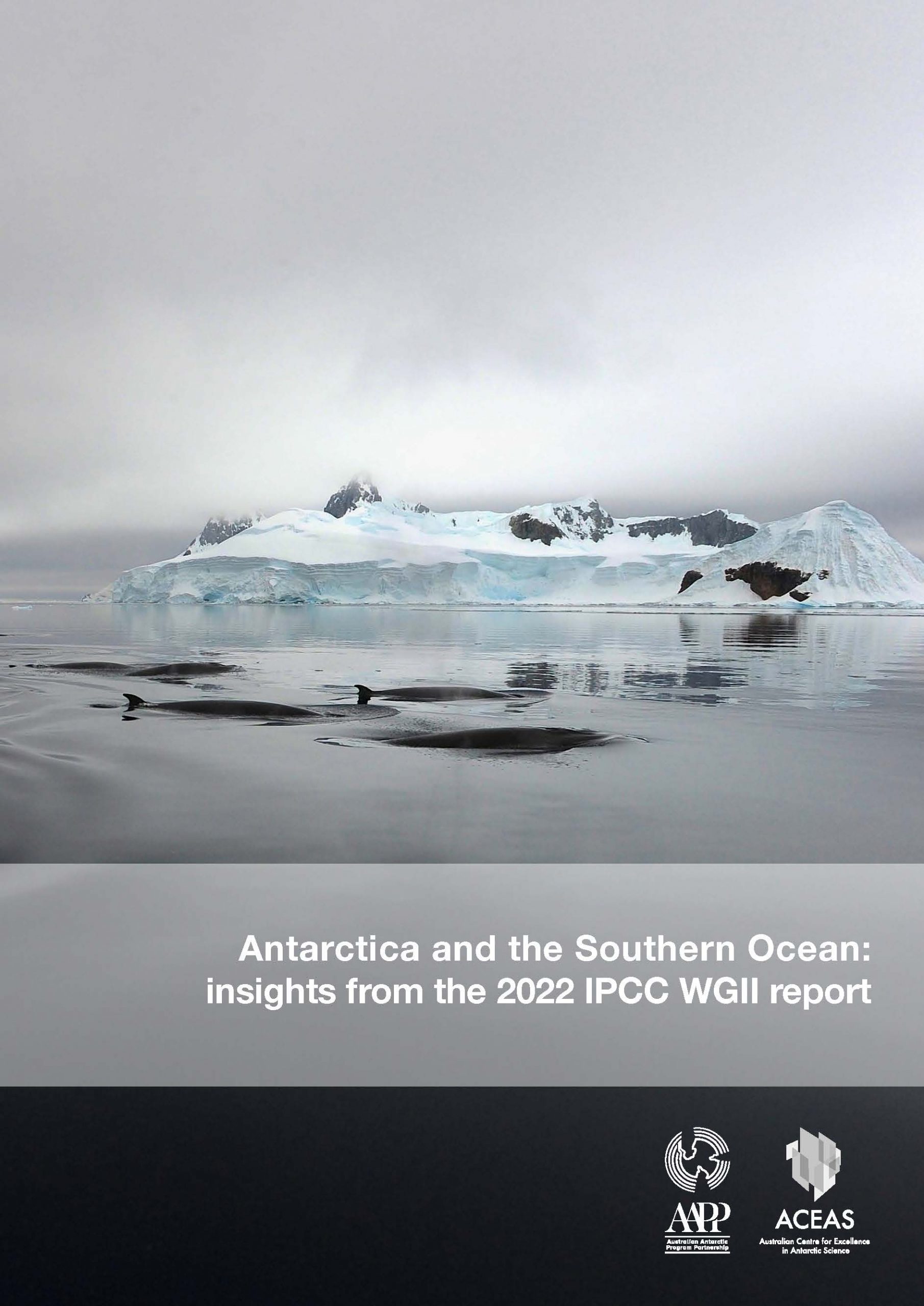PUBLICATIONS
The Australian Antarctic Program Partnership has supported the research undertaken in these publications:
Opening the floodgates: a science briefing about Antarctica and sea-level rise
Sea-level rise is one of the most critical impacts the world faces from global warming. Ultimately it will transform coastlines and engulf low-lying megacities and small island nations, reshaping the natural world and human society.
In just the last thirty years, global sea level has risen by up to 10.5 centimetres. That may not sound like much, but just a few extra centimetres dramatically increases the frequency of coastal flooding. As high emissions continue, global mean sea-level rise could top one metre by the end of this century — waist-high for many people.
Melting ice from Antarctica is a growing contributor. Antarctica currently loses around 17 million tonnes of ice — equivalent to a giant ice cube measuring 260 metres each side — every hour.
Sea-level rise is unavoidable. The seas are rising and will continue to rise. We have the power to choose how far and how fast.
On Thin Ice: a science briefing about changes in Antarctic sea ice
The Australian Antarctic Program Partnership (AAPP) and the Australian Centre for Excellence in Antarctic Science (ACEAS) have prepared a briefing paper for policy makers about three unprecedented extreme low Antarctic sea-ice events over the last seven austral summers.
Antarctic sea ice makes the planet tick - a cooling sunshade, an insulating blanket, a unique habitat, a protective wall, a global ocean pump.
The annual cycle of the Southern Ocean freezing and then melting is like a heartbeat. Just as a change in our heartbeat affects our whole body, a change to sea ice around Antarctica affects the whole world.
This crucial life-support system for Earth may be faltering.
The briefing paper provides information about why sea ice matters, how Antarctic sea ice is changing, the drivers of these changes, the implications, and what we should do.
Antarctica and the Southern Ocean: insights from the 2022 IPCC WGII report
The Australian Antarctic Program Partnership (AAPP) and the Australian Centre for Excellence in Antarctic Science (ACEAS) have released a report on IPCC WGII key findings for Antarctica and the Southern Ocean.
Over time, greenhouse gas emissions have caused observable changes in Antarctica and the Southern Ocean, triggering a warmer climate, more extreme weather and sea-level rise. These changes affect planetary, and Antarctic and Southern Ocean systems.
In Australia, our fisheries, natural systems and human communities are encountering extreme weather and climate trends some of which are linked to the changes emerging in the Antarctic.
Achieving climate resilience is currently a challenge in the Antarctic Treaty System including management of protected areas.
Rapid and ambitious actions in the current decade will influence whether these changes can be avoided or will become irreversible for centuries to millennia.
ARCHIVE

Antarctic Climate and Ecosystems CRC (ACE CRC) 1991 - 2019
Between 1991 and 2019 the Antarctic Climate and Ecosystems CRC (ACE CRC) was Australia’s primary vehicle for understanding the role of the Antarctic region in the global climate system, and the implications for marine ecosystems. The organisation was a strong and productive collaboration that included the Australian Antarctic Division, CSIRO, the University of Tasmania, the Bureau of Meteorology, and many other Australian and international research institutions.
The ACE CRC produced many position analyses, report cards, and technical reports. These can be viewed on the archived website.





